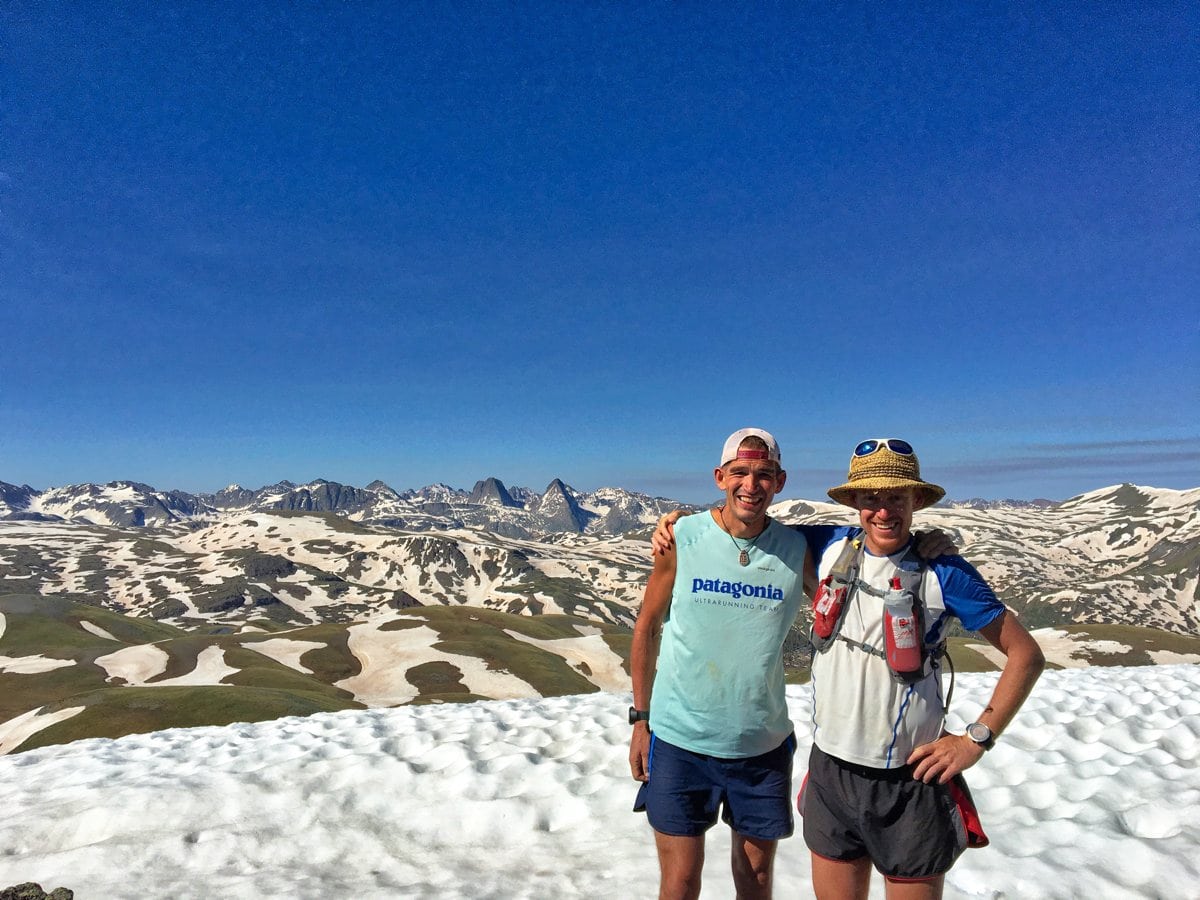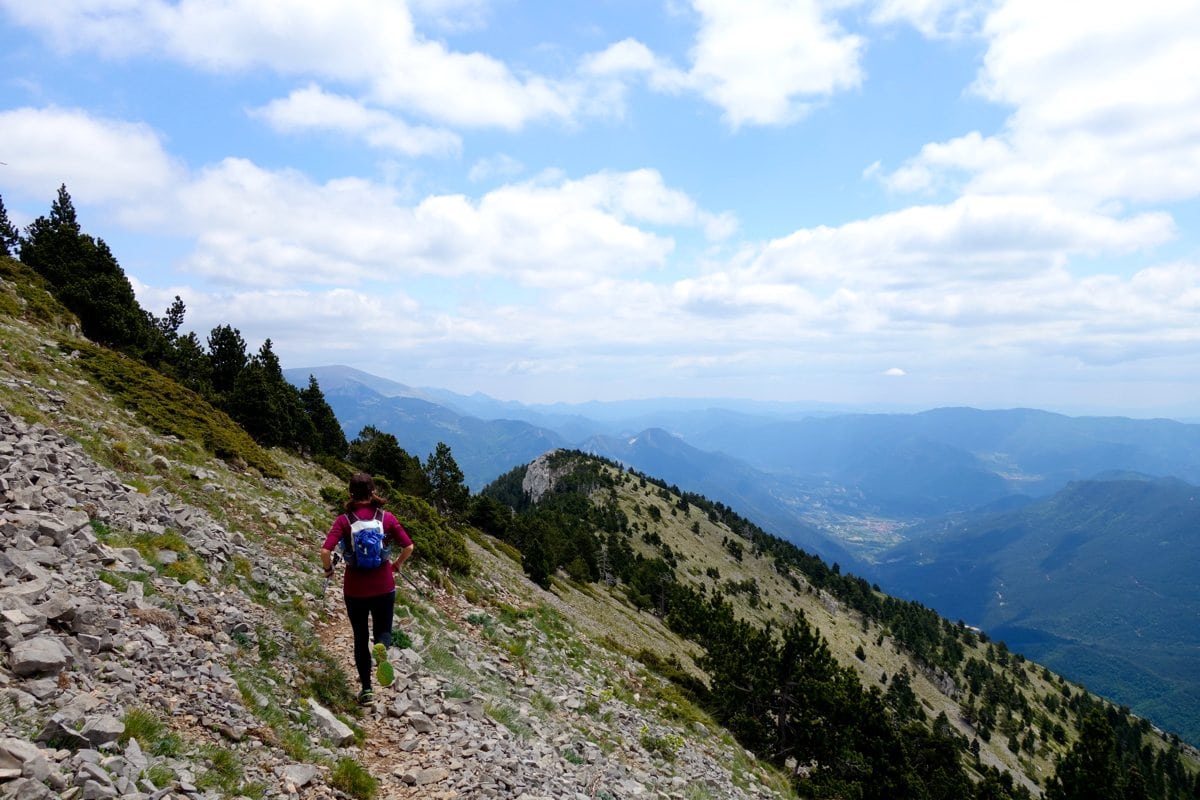It’s that time again. With the Hardrock 100 only a few months out, it’s time for the Powell Push or, really, a few of them. What’s a Powell Push? Well, although I just coined the term, it’s a brief–usually 10 days to three weeks long–intense ramp-up in training volume that’s preceded and followed by dedicated recovery periods typically in a lead-up to a focus race.
Traditional training advice advocates for the ‘10% Rule,’ wherein one doesn’t increase his or her training by more than 10… or maybe 15% week over week. That’s a great general rule. However, it’s one I eschew for brief periods of time when I might double or triple (or more) my base training volume.
For example, before my most recent Hardrock in 2016, I went from a relatively down March and April, when I probably averaged 30 to 40 miles per week (mpw) (after a consistent winter when I averaged 55 mpw), to two weeks where I averaged 100-plus miles, 20-plus hours, and 25,000-plus feet of climb per week mostly in the high-altitude terrain above Silverton, Colorado. The following week, I cut the training nearly in half to 60 miles, 12 hours, and 12,000 feet of climbing. [Author’s Note: Ha! In looking back at my Strava records, I see that I actually called the next two weeks ‘The Push,’ so I guess this concept’s been percolating around my head for a while!] After that recovery, it was back for another two-week push. The first week was my ’10 Miles of Vert’ week with 130 miles, 35 hours, and 53,635 feet of climbing, which I followed with an 84-mile, 21-hour, 26,000-foot week. Then, training was done as I headed off to cover Western States and return to Silverton to taper.

AJW and I teamed up for part of my 2016 training push in Silverton, Colorado. Photo: iRunFar/Meghan Hicks
A year earlier in 2015, I racked up four Powell Pushes ahead of Hardrock: a three-week stretch in March and April around home and later in Leadville, Colorado, two weeks in April and May in Nepal at the Mustang Trail Race and to the Annapurna Sanctuary, a week in late May in Catalunya between covering Spanish races, and two weeks in June in Silverton.
The push-pause layout of 2015 is informative as to why I have these Powell Pushes. For starters, for some of us our lives frequently have stretches that are inconducive to training. For me, that most frequently comes in the form of race-coverage travel, during which I can rarely get in more than a short daily shakeout run for seven to 10 days at a time. Early in 2015, I looked at my busy, upcoming travel schedule and built my Hardrock training around it. I intentionally inserted the four pulses between five hectic stretches, first preparing to move out of out of our house for summer and then covering, in sequence, Lake Sonoma, Transvulcania and Zegama, the Trail World Championships, and Western States.
After doing… and surviving a sequence of Powell Pushes in 2015, I decided to incorporate them by design rather than necessity in 2016 and, again, this year. I find value and enjoyment in the focused training blocks, where I also emphasize a better diet, more sleep, and lower life stress. I also enjoy the down weeks where I feel physically fresh and extremely productive in my work. Personally, I also find that I thrive on either extremely consistent training (like long, unbroken stretches of 50 to 55 mpw) or brief, more-intense training. At this point in my running, I tend toward minimal running (and let work take over) if I just let my training float. Indeed, this carving out of dedicated time to train that I steadfastly defend in the unending tide of work and obligation creep is one of its most important factors.
Do I think such a push is right for everyone? Absolutely not! Even in 2015, I came into those pushes with nearly a quarter century of continuous training under my belt. That base counts for a lot. In the shorter term, while I had some lower-mileage periods before diving into these series of pushes, I had periods of solid base training in the preceding winters. While I wasn’t going into these fit as a fiddle, I already had my legs under me. I’d suggest that folks making a drastic, if brief surge in their training go in fresh, but with a decent base training and, preferably, years of running experience. Holding up well during and after stage races, multi-day fastpack trips, or other multi-day adventures might also suggest you’re ready for such a push.
Do I think someone with a more conventional work schedule can get in similar training surges? Sure! If they want to. You could take a week’s vacation and have a solid nine days of training while on holiday or catching up around the house. More realistically, you could also take just a single half day off during the week and crush a weekday long run, add a second weekday long run by getting up way early or staying up late, and/or maybe time it with a long holiday weekend. It might take a little creativity, but I bet you can come up with a way to throw in a big 10-day training block before your next big race. Aside from any physiological benefits, I think you might also get a big boost in confidence if you’re able come out the other end of a challenging training block as well as allowing you to stop worrying and start embracing those times when work, family, or other obligations limit your running.
One thing I’ve not mentioned is the importance I place on self-monitoring during these pushes. There may be times to push through injury and deep fatigue and the like… I don’t see one of these pushes to be one of those times. If I’m deeply tired, have a lingering overuse niggle, or some muscle group doesn’t bounce back within a couple days, I take a real easy day (20-30-minute shuffle) or an off day without any regret. I’d much rather bounce back to near 100% as soon as possible than push through at 80%. For instance, I just finished my first two-and-a-half-week push of my 2018 Hardrock training during which I took three easy days of 2.5 to 3.5 miles, including easy runs on consecutive days.

A mountain goat atop Quandary Peak in Colorado during my first Powell Push of 2018. Photo: iRunFar/Bryon Powell
While admittedly anecdotal, I find my body and mind better able to handle these pushes… with adequate subsequent rest than the more continuous grind of doing ‘more reasonable’ high-volume training week in and week out. For instance, my Achilles tendons (and, more generally, my lower-leg complex) are my most likely point for physical breakdown in training and I find they’re much better able to handle an extreme-for-me push of 20 or 30 or more hours per week sandwiched by rest than 10 hours per week for long stretches of time. And, mentally, it’s not even close. I find these pushes to be a blast, as they’re a challenge, a change from the routine, and, often, a good means of exploring the body and the mind. You might just find them to be fun yourself! Embracing a novel training approach might be particularly refreshing for lifelong runners looking for something new.
To be clear, I’m not claiming to have come up with something new with Powell Pushes. Plenty of high-school runners do something similar when they attend and go all-in with a summer cross-country camp. Similarly, college teammates might get together and crush a couple weeks over the summer or over spring break. Plenty of ultrarunners do the same when they go on an indulgent running vacation or jump in a stage race. However, for me, it’s only been in the past few years that I’ve started intentionally including these Powell Pushes in my training, first out of necessity and, now, out of desire and effectiveness. In at least my busy life, I’ve found that a couple big training pushes can prepare me for my biggest challenges.
Call for Comments
- Do you ever include big training surges into your ultramarathon training? If so, when do you take them, what do they look like, and how did they turn out? Do you think you benefitted from them?
- Have you ever had major problems during or after a temporary surge in your training?


